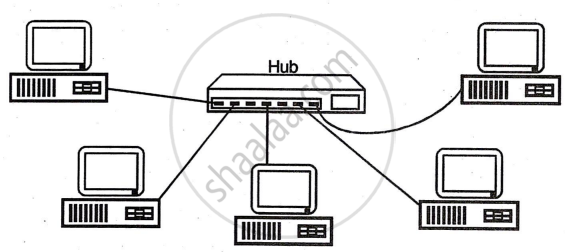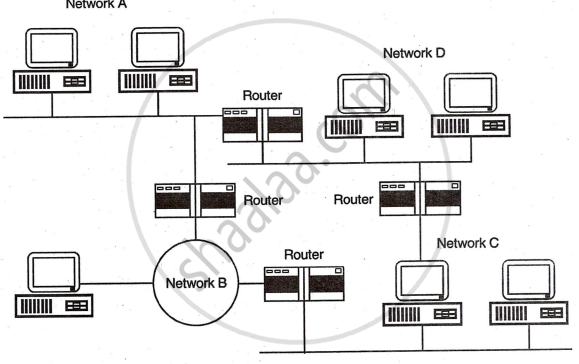Topics
Introduction to Microprocessors and Organization of 8085
Instruction Set and Programming of 8085
Introdcution to Inted X-86 Family
Introduction to Microcontroller
Networking Technology
- Introduction to Networking
- Types of Networks
- Multiplexing
- Study of Transmission media
- Coaxial cable (Cable Media)
- Twisted pair cable
- Fiber Optic Cable
- Unbounded (Wireless) Media
- Access Methods
- Network Topologies
- Ethernet (Network Architectures)
- Token-Ring (Network Architectures)
- Internet protocols
- Introduction to connectivity devices
- Modem
- Hubs
- Repeaters
- Routers
Introduction to connectivity devices
Modem
Computers store digital data, but telephone lines transmit analog data. Modems convert digital signals to analog for transmission and back to digital for reception—this process is called modulation and demodulation. Modems enable internet access and tasks like email and data transfer, but they have limited bandwidth. Modem speeds are measured in bits per second and are classified as asynchronous or synchronous. Asynchronous modems transmit data without a clock using start bits for timing and are ideal for PC-to-PC communication. Synchronous modems use clocks and synch signals, allowing for the transmission of various data types with error checking via CRC.

Hubs
Hubs are central connection points for network cabling, with three types: passive, active, and switching. Passive hubs combine signals without processing them, while active hubs amplify and regenerate signals using electronic components. Switching hubs, the most advanced, quickly route signals between ports and can replace routers. Hubs are essential for extending networks, particularly those not using coaxial cables. Intelligent hubs add capabilities like network management and intelligent path selection in addition to signal amplification.

Repeaters
Repeaters are simple, inexpensive devices used to extend network cabling by regenerating signals. They do not filter or interpret data but simply repeat signals from one port to another. There are two types: amplifying repeaters, which boost the entire signal, and signal-regenerating repeaters, which create an exact duplicate of the original signal. By adding repeaters, the network length can be expanded beyond its predefined limit.

Routers
Routers are intelligent devices used for internetwork connectivity, connecting two or more independent networks, such as Ethernet and token-ring. They use logical network addresses to efficiently route data packets, employing algorithms to determine the best path for delivery. Routers can divide large LANs into smaller segments or connect LANs to WANs. They support protocols like IP, IPX, and DDP for routing. Routers can be static, requiring manual path specification, or dynamic, automatically determining routes. A router maintains a table of available routes and uses algorithms to select the most efficient one.

